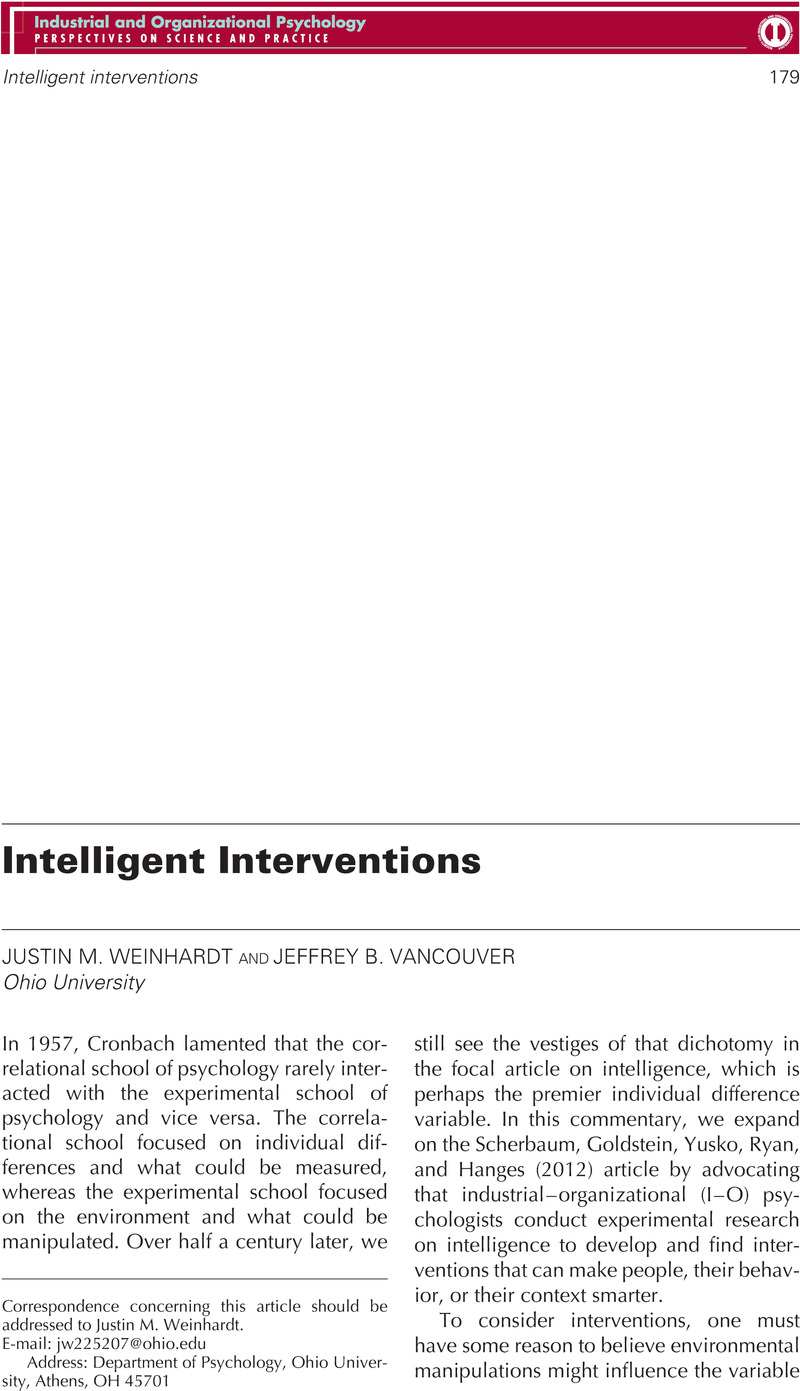Crossref Citations
This article has been cited by the following publications. This list is generated based on data provided by Crossref.
Weinhardt, Justin M.
and
Vancouver, Jeffrey B.
2012.
Computational models and organizational psychology: Opportunities abound.
Organizational Psychology Review,
Vol. 2,
Issue. 4,
p.
267.
Hanges, Paul J.
Scherbaum, Charles A.
Goldstein, Harold W.
Ryan, Rachel
and
Yusko, Kenneth P.
2012.
I–O Psychology and Intelligence: A Starting Point Established.
Industrial and Organizational Psychology,
Vol. 5,
Issue. 2,
p.
189.
Dinh, Jessica E.
Lord, Robert G.
Gardner, William L.
Meuser, Jeremy D.
Liden, Robert C.
and
Hu, Jinyu
2014.
Leadership theory and research in the new millennium: Current theoretical trends and changing perspectives.
The Leadership Quarterly,
Vol. 25,
Issue. 1,
p.
36.
Vancouver, Jeffrey B.
and
Carlson, Bruce W.
2015.
All Things in Moderation, Including Tests of Mediation (at Least Some of the Time).
Organizational Research Methods,
Vol. 18,
Issue. 1,
p.
70.



